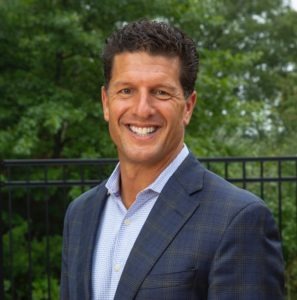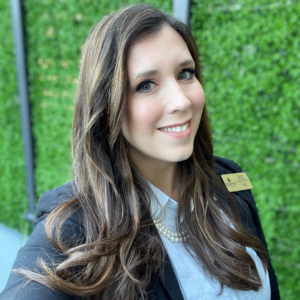Listening with compassion
Communication is vital in healthcare. As the Director of Communications and Marketing for the National Association of Activity Professionals Credentialing Center, I have come to rely on multiple forms of communication to meet activity professionals’ needs. As the granddaughter of a woman living in a long-term care setting, I have come to rely on it for my peace of mind as well.
In the world of social media, people are receiving information in 144 characters or less and are reacting to information based on a picture or just a few words. For those who work in long-term care, this quick form of communication is not enough. The residents and families we serve need and deserve the time and effort it takes to explain problems and opportunities fully and make sure they understand their choices.
The communication around an individual’s nursing care should be timely and professional. Although it is called a “nursing home,” it is just as important that all disciplines have the standard of impeccable communication centered on the whole person, not just the nursing components of a person’s care. This includes the entire team.
The activity team has the unique opportunity of sharing with residents the things they love the most. Taking farmers out on country rides to see if the corn is knee high by the Fourth of July, planting flowers, singing songs, baking bread, painting, drumming, playing volleyball and attending religious services are all opportunities for engagement. They are also opportunities for communication.
 When families place a loved one in a nursing home, they experience myriad emotions. They may feel loss, grief or even relief, knowing that their loved one is in a safe place receiving the care they need. As a care professional, when a member of your own family is placed in the long-term care facility where you work, the feelings can be overwhelming at times.
When families place a loved one in a nursing home, they experience myriad emotions. They may feel loss, grief or even relief, knowing that their loved one is in a safe place receiving the care they need. As a care professional, when a member of your own family is placed in the long-term care facility where you work, the feelings can be overwhelming at times.
My grandmother’s journey to the nursing home started with a simple urinary tract infection, which led to a brief hospital stay. Because she had lived through two broken hips and was walking a little slower with her walker, the family had the difficult discussion regarding the safest place for her to live. The numerous hours of family support and the meal program she participated in was just not enough anymore.
Family members did their due diligence in visiting area nursing homes. They walked right out of some places. They did not feel like the staff heard what they needed or heard what my grandmother wanted. The lack of communication that occurred while interviewing nursing homes had a huge impact on our family members as visitors—In some cases, decisions were made within minutes of arrival.
Eventually, my grandmother chose to undergo her short-term rehabilitation at the facility where I have worked for 13 years. She then became a long-term care resident. Her room was filled with person-centered items, including her lighted magnifying glass to help with macular degeneration, her favorite house plants, favorite chair and several wall hangings that had surrounded her in her home.
I am the Director of Recreation, and my grandmother was not “a joiner.” Occasionally she would attend a special event, such as watching the holiday tree-lighting ceremony, listening to local chorales and visiting with the multitude of specialty animals that would visit. When she would write to her family and friends she would ask to include her picture with the porcupine, or the kangaroo. My grandmother felt her life was good, and so did our family. She was treated with dignity, her rights and preferences were respected and the nursing assistants provided the care she needed on her schedule.
That all changed when her health declined, and my life as a team member and my life as a granddaughter collided. At no other time have I realized the importance of communication. A few things happened, and the team members on her unit did not share the information with each other—or with the family.
It started out small and then escalated. A bloody nose, a transcription error, a team member on a cell phone while providing care, mistakes made on the food tray. It is almost impossible to come back from missteps in communication.
Processes such as service recovery are Band-aids on problems when it involves a loved one’s care. To some they would seem like minor things that did not need sharing. I have learned a lot in my 27 years as a professional. One of those is that you pay attention to the minor things, as they tell a story.
The activity team has the responsibility and the opportunity to share the personal story of the residents they serve. Those personal details allow every person who interacts with that resident to know about them.
The NAAPCC recognizes the demands of the activity profession and has set standards for board certification. The NAAPCC was formed after three years of research, discussion and listening to activity professionals across the nation. We are organized as an independent body exclusively for the purpose of credentialing Activity Professionals that meet the standards and requirements set forth by the Center. We are the only credentialing body for Activity Professionals that follows the standards set forth by the National Commission for Certifying Agencies (NCCA). We do not educate nor require any specific course or class. All Activity Professionals will need to successfully pass the competency exam to be issued a board certification.
When my grandmother, Jane, passed away this January, her obituary mentioned the people who truly made a difference in her care, the people who communicated with her on personal level. A few of them were nurses, but others were the recreation therapist who brought in that special cup of coffee, the housekeepers who shared their plans for dinner and the chaplain who shared the stories of his travels. She taught everyone that kindness, respect and communication go a long way. It is a lesson we can all carry forward.
 Shelley Evans MT-BC, AC/Educator-BC, CADDCT, CDP, ACC, is the Director of Communication and Marketing for the National Association of Activity Professionals Credentialing Center (NAAPCC). Shelley has over 27 years of experience working in both long-term care and outpatient mental health. She is a board-certified Music Therapist and Activity Consultant/Educator. She is the Founder and CEO of Dementia Resources of the Finger Lakes, LLC, providing both dementia education and resources for care partners and professionals.
Shelley Evans MT-BC, AC/Educator-BC, CADDCT, CDP, ACC, is the Director of Communication and Marketing for the National Association of Activity Professionals Credentialing Center (NAAPCC). Shelley has over 27 years of experience working in both long-term care and outpatient mental health. She is a board-certified Music Therapist and Activity Consultant/Educator. She is the Founder and CEO of Dementia Resources of the Finger Lakes, LLC, providing both dementia education and resources for care partners and professionals.
I Advance Senior Care is the industry-leading source for practical, in-depth, business-building, and resident care information for owners, executives, administrators, and directors of nursing at assisted living communities, skilled nursing facilities, post-acute facilities, and continuing care retirement communities. The I Advance Senior Care editorial team and industry experts provide market analysis, strategic direction, policy commentary, clinical best-practices, business management, and technology breakthroughs.
I Advance Senior Care is part of the Institute for the Advancement of Senior Care and published by Plain-English Health Care.
Related Articles
Topics: Activities , Articles , Executive Leadership , Resident Care










